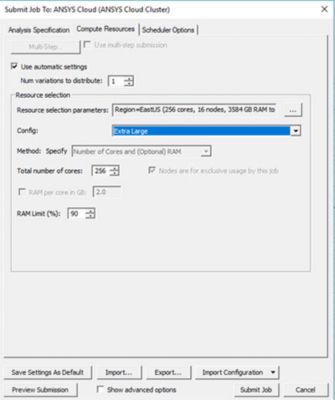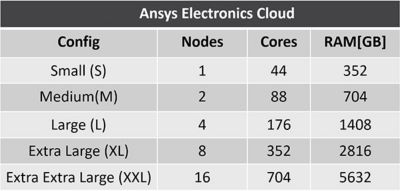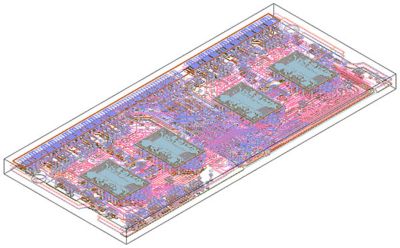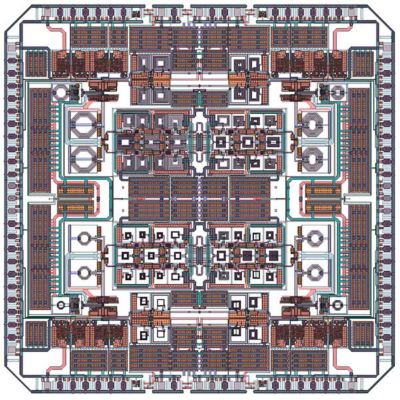-
United States -
United Kingdom -
India -
France -
Deutschland -
Italia -
日本 -
대한민국 -
中国 -
台灣
-
Ansys si impegna a fare in modo che gli studenti di oggi abbiano successo, fornendogli il software gratuito di simulazione ingegneristica.
-
Ansys si impegna a fare in modo che gli studenti di oggi abbiano successo, fornendogli il software gratuito di simulazione ingegneristica.
-
Ansys si impegna a fare in modo che gli studenti di oggi abbiano successo, fornendogli il software gratuito di simulazione ingegneristica.
-
Contattaci -
Opportunità di lavoro -
Studenti e Accademici -
Per Stati Uniti e Canada
+1 844.462.6797
ANSYS BLOG
January 4, 2021
The Easiest New Year’s Resolution: Better, Faster Simulations
Welcome to 2021. If you made a New Year’s resolution to become more productive, you’ve come to the right place. We’ll show you how to keep that resolution simply and quickly, so you can check it off before January is over.
How often do you have to cut corners due to compute limitations? If you never have to cut corners because of hardware limitations, you can stop reading now. For the rest, many of you are confined to using your company-provided computer for simulations, or to using the company server resources that are often in high demand. So, you might cut corners. You might simplify your designs or make assumptions, or simulate fewer data points. You might limit yourself to single-physics simulations. You might run serial simulations instead of running them in parallel.
Out With the Old Hardware Constraints
Hardware constraints negatively impact 75% of our users, according to an Ansys survey. The impact is significant. For example, if you need to serially run 10 design points that each take eight hours consuming your local machine’s eight cores and 8 GB of RAM, then you have to wait for 80 hours to get all your results. That’s a lot of wasted time waiting for results that ends up being taken away from your prototyping, and build and ship stages.
By contrast, with Ansys Cloud, you can set up the design on your local machine then push the designs to the cloud to run simulations on very large machines with up to 132 cores and 1,056 GB RAM. You can run all 10 design points in parallel (with 12 cores per design point). This set up results in a simulation of six hours. With Ansys Cloud, all 10 design points running in parallel complete in a total of six hours. We can kick off the design at the end of our workday and pick right back up again analyzing results when we return to work the next day. We can now identify and focus on the most promising design point or fix a problem we have discovered, resulting in a better design.
Simulations can be submitted to Ansys Cloud via simple pull-down menus.
With Ansys Cloud, your experience is identical to the one you are familiar with using your local machine — but you get your results much faster. Ansys handles all the IT for you, so you don’t have to build up a large team to manage your local servers or compete for the attention of your local IT team. Ansys Cloud optimizes high-performance computing (HPC) for Ansys solvers. Ansys Cloud is integrated directly into Ansys products. Like a Formula 1 car whose performance is limited if placed in city traffic, but is tuned for the racetrack, Ansys Cloud is tuned specifically for running Ansys products. The complete solution — from solvers to the cloud — was developed by Ansys for full architecture integration. Ansys supports the entire simulation process from beginning to end.
Not Your Father’s Cloud Computing
In the past, to simulate on the cloud, you would have to push your data out to the cloud, simulate, then pull your data back to analyze it. It was an awkward and time-consuming process. But now Ansys has introduced the In-Browser Interactive Client, which allows you to run on any of our virtual design interfaces (VDIs) to interact with the design on the cloud, plot your results and investigate your various data points with full visual interaction. Following this analysis, you can then pull the relevant data back to your local machine. This seamless remote application experience feels just like you are working on your local machine. Ansys Cloud for Ansys Electronics Desktop (AEDT) is designed explicitly to provide this local-like experience to you. You now have the ability to run on five different nodes, each consisting of 44 cores and 352 GB RAM. You can easily choose the configuration of nodes that is best for your simulation with an online job submission menu — up to an astounding 704 cores with 5,632 GB of RAM.
Cloud Computing More Than Doubles Simulation Productivity
Let’s look at some examples of how Ansys Cloud will improve your productivity. The first example is a board-to-board connection with 18 ports.
A board-to-board connection
The mesh time will always be identical for any of the virtual machines. The total mesh time for this design is 52 minutes, 33 seconds with six adaptive passes, 2.2 million tetrahedral mesh elements and a matrix size of 10 million unknowns, consuming 102 GB of RAM.
Running this simulation on our Small configuration results in a sweep time of three hours, 40 minutes for a total time with meshing of four hours, 32 minutes. As you jump up to larger machines, you can drive the sweep time down to 45 minutes for a total time of one hour, 37 minutes on our XL machine, a speed up of 2.79x. On the small machine, you might be able to kick off one design in the morning, one in the afternoon, then another before you go home for the day. With the XL machine, you can complete two simulations before lunch and two after lunch so you can get to your analysis faster. You can scale the machine sizes up or down depending on your needs.
Our next example is larger, a complete DIMM module design with 128 ports provided by JEDEC, a design standard.
A complete DIMM module design
Total mesh time is six hours, 29 minutes with seven adaptive passes, 6.9 million tetrahedral mesh elements and a matrix size of 28.3 million unknowns, consuming 351 GB of RAM.
This design barely fit into the Small machine, with a sweep time of 17 hours, 30 minutes and a total time of nearly 24 hours. On our XXL machine, the sweep time completed in two hours, 45 minutes, for a total time of nine hours, 13 minutes, a speed up of 2.6x.
What does this all mean to your productivity? Ten years ago, most computing was done in a 32-bit environment with a maximum of 4 GB of RAM. No one could imagine simulating a design of this magnitude. You would have needed to break up the design into smaller pieces, introducing a manual, error prone, time consuming process that would result in compromised accuracy.
At Ansys we are constantly pushing the envelope. Recently we “solved the unsolvable”: an entire 5G radio frequency integrated circuit (RFIC) device in one simulation, including the entirety of it, from every metal layer to the packaging and 128 ports of the 5.5 mm x 5.5 mm design. This was not possible a year ago, much less 10 years ago.
A 5G radio frequency integrated circuit (RFIC)
This design will not fit into most of our virtual machines, and only becomes possible with our XXL machine of 704 cores and 5.6 TB of RAM. The simulation completed in a total time of 29 hours and 47 minutes, which included meshing plus adaptive solving. That’s solving the unsolvable.
Start the New Year With a Free Trial
What problems do you consider unsolvable that can be solved with the Ansys Cloud? How can you deliver better products using the Ansys Cloud and become more productive at the same time? We are so confident that you will find a great productivity boost in the Ansys Cloud that we are offering you a free trial. (If you’ve made it to this point in my blog, I think you deserve it!) Ansys Cloud runs Ansys HFSS, SIwave, Q3D, Icepak, Maxwell, Mechanical and Fluent. The free trial includes access to all machine configurations, VDI remote desktop access, 1 TB storage, Cloud Forum, Cloud Portal, cloud-based post- processing and 24/7 support. The trial runs for 30 days and comes with 1,000 Ansys Elastic Units.
Request your free Ansys Cloud trial here or contact your account manager.
Don’t trust our numbers? Register for the free trial of Ansys Cloud and run your own benchmark to compare the results vs. your local computing. Measure your savings and send us the result to get some advice on how to improve your productivity even more.
You can also access electromagnetic simulation training at the Ansys Learning Hub (ALH). Three courses available to you online 24/7 that might be of particular interest are:
- Ansys HFSS 3D Layout Getting Starter
- Ansys HFSS 3D Layout for PCB
- Ansys HFSS 3D Advanced
These three courses are hosted in the Signal and Power Integrity Learning Room within the Ansys Campus Electromagnetics Building in ALH.
Happy New Year! I hope you take advantage of the free Ansys Cloud trial to knock out that New Year’s resolution of increased productivity. Give it a try, I want to hear back from you about your experience with it. On to 2021!

















